A 1955 nickel without a mint mark (Philadelphia) is worth about $1-$2 in uncirculated condition, while a 1955-D (Denver) is worth approximately $1.10. The most valuable variety is the 1955-D/S overmintmark, where a San Francisco “S” mint mark was overstruck with a Denver “D” mark. However, the most significant feature is “Full Steps” – five clearly visible parallel steps on Monticello’s base. These coins are highly valuable because the steps wear down first. A 1955 nickel graded MS64 with full steps sold for $750, with higher grades commanding thousands. To identify your coin, check the mint mark on the reverse near Monticello and examine the steps for complete, sharp definition.
Most collectors overlook 1955 nickels in their change, assuming they’re just worth five cents. Yet certain 1955 Jefferson nickels can fetch hundreds or even thousands of dollars at auction. The difference lies in understanding mint marks, grading standards, and specific die varieties that transformed ordinary pocket change into numismatic treasures. Whether you inherited a coin collection or recently discovered old nickels in a family drawer, knowing what separates common circulation finds from valuable specimens could mean significant financial returns.
Standard 1955 Nickel Values Across Mint Facilities
The United States Mint produced Jefferson nickels at two facilities in 1955: Philadelphia (no mint mark) and Denver (D mint mark). Philadelphia struck 7,888,000 pieces while Denver produced 74,464,100 nickels that year, making the Philadelphia issues considerably scarcer.
A typical 1955 nickel without mint mark grades between Good-4 and Fine-12 in circulated condition, commanding face value to approximately $0.35. The real value emerges in uncirculated specimens. A 1955 Philadelphia nickel grading MS-60 (Mint State with no wear but contact marks present) trades around $1.50, while MS-65 examples with attractive luster reach $8 to $12 at major dealers.
The 1955-D Denver nickel shows similar patterns but with slightly different pricing. Circulated examples remain at face value, but uncirculated pieces grade MS-60 typically sell for $1.10 to $1.50. An MS-65 specimen commands $6 to $10 depending on eye appeal and strike quality.
Basic Value Table:
| Grade | 1955 (No Mint Mark) | 1955-D (Denver) |
|---|---|---|
| Good-4 | $0.05 | $0.05 |
| Fine-12 | $0.25 | $0.20 |
| AU-50 | $0.75 | $0.65 |
| MS-60 | $1.50 | $1.10 |
| MS-65 | $10.00 | $8.00 |
| MS-67 | $85.00 | $75.00 |
These values represent coins with average strikes lacking the special characteristics that elevate certain specimens into premium territory.
The 1955-D/S Overmintmark Variety Explained
Among 1955 Denver nickels exists a fascinating die variety designated FS-501 by collectors—the 1955-D/S overmintmark. This error occurred when Philadelphia Mint personnel initially punched dies with an “S” mint mark (intended for San Francisco, which didn’t produce nickels that year), then corrected the mistake by overpunching with a “D” for Denver.
Under magnification of 5x to 10x, collectors can observe remnants of the original “S” beneath or around the visible “D” mint mark on the reverse. The most pronounced variety, catalogued as FS-501, shows clear S serif elements protruding from the D, particularly at the upper curve.
NGC and PCGS authentication services recognize multiple die states of this variety. The strongest FS-501 examples in MS-65 grade sell between $45 and $85 at Heritage Auctions, with MS-66 specimens reaching $120 to $180. A PCGS MS-67 example sold for $456 in January 2023, demonstrating collector demand for high-grade overmintmark varieties.
Weaker D/S varieties exist where the underlying S shows minimal visibility. These command modest premiums of $5 to $15 above standard 1955-D values in uncirculated grades. Professional grading ensures proper attribution, as detecting subtle overmintmarks requires experience and proper lighting equipment.
Full Steps Designation: The Premium Maker
The single most valuable characteristic for any 1955 Jefferson nickel—regardless of mint mark—is the “Full Steps” designation. This refers to the five horizontal steps at the base of Monticello (Thomas Jefferson’s Virginia home) depicted on the coin’s reverse.
Jefferson nickels suffer from inherent design challenges. The steps occupy the highest relief point on the reverse die, making them susceptible to weak strikes during production and first areas to show wear in circulation. Most 1955 nickels display four steps clearly with the fifth partially merged, or show complete step merger creating a blob-like appearance.
A Full Steps designation requires all five steps appear completely separated with sharp, unbroken lines across their entire width. Major grading services add “FS” or “5FS” to the grade for qualifying specimens. This designation dramatically multiplies value.
Full Steps Value Premiums:
| Grade | 1955 (No Mark) Standard | 1955 (No Mark) FS | 1955-D Standard | 1955-D FS |
|---|---|---|---|---|
| MS-64 | $6 | $450 | $5 | $380 |
| MS-65 | $10 | $850 | $8 | $750 |
| MS-66 | $35 | $2,200 | $30 | $1,800 |
| MS-67 | $85 | $8,500+ | $75 | $7,200+ |
Heritage Auctions sold a 1955 Philadelphia nickel graded PCGS MS-65 FS for $840 in April 2023. A 1955-D in MS-66 FS realized $1,920 through Stack’s Bowers in September 2023. The finest known 1955-D graded MS-67+ FS by NGC brought $14,400 at auction in 2022, establishing the variety’s premium status.
Full Steps specimens represent less than 2% of surviving 1955 nickels in MS-65 or higher grades, according to PCGS population reports. This scarcity, combined with strong collector demand for Jefferson nickel registry sets, maintains robust pricing.
Additional Error Types Worth Examining
Beyond overmintmarks and Full Steps, several mint errors occasionally surface on 1955 nickels that warrant attention.
Off-Center Strikes: Coins struck when the planchet wasn’t properly centered in the collar die show partial designs. A 1955-D nickel with 10-15% off-center striking retaining a full date commands $35 to $75. More dramatic 30-40% off-center examples with visible dates reach $125 to $250 depending on eye appeal.
Broadstrikes: When collar dies fail to contain the planchet during striking, the resulting coin measures larger than standard 21.2mm diameter. A 1955 broadstrike nickel measuring 23-24mm typically sells for $40 to $80 in uncirculated condition.
Die Cracks and Cuds: Progressive die deterioration creates raised lines (cracks) or chunky raised areas (cuds) on finished coins. Minor die cracks add $2 to $10 to uncirculated 1955 nickels. Major cuds covering significant design portions command $50 to $150 depending on size and location.
Double Die Varieties: While 1955 cents feature the famous doubled die obverse, 1955 nickels lack comparable dramatic doubling. Minor doubled die varieties exist showing slight doubling in lettering, but these command modest $8 to $25 premiums in MS-65 grades.
Struck on Wrong Planchet: Extremely rare errors occur when nickel dies strike copper or silver planchets intended for other denominations. A 1955 nickel struck on a cent planchet would be worth thousands, though none are currently documented in major error registries.
Grading Factors That Determine Market Value
Understanding grading standards helps collectors assess their 1955 nickels accurately before pursuing professional authentication. The Sheldon Scale from 1 to 70 provides standardized terminology.
Circulated Grades (1-58): Good-4 shows heavy wear with Jefferson’s outline visible but most detail gone. Fine-12 displays moderate wear with major design elements clear. Extremely Fine-40 exhibits light wear on highest points. About Uncirculated-50 shows slight friction on Jefferson’s cheekbone and hair details.
Uncirculated Grades (60-70): MS-60 nickels exhibit no wear but show numerous contact marks from bag handling. MS-63 displays moderate contact marks with decent luster. MS-65 shows minimal marks visible to naked eye with strong original luster. MS-66 exhibits exceptional eye appeal with nearly perfect surfaces. MS-67 and higher represent near-flawless specimens.
Luster quality significantly affects grading. Original cartwheel luster—rotating bands of light across the surface—indicates proper storage. Cleaned coins showing hairline scratches or unnatural brightness receive “Details” grades with significantly reduced values.
Strike quality matters independently from surface preservation. A weakly struck nickel with full mint luster may grade MS-65 but lack premium value if design details appear mushy. Conversely, sharply struck specimens with minor bag marks often sell above typical prices for their grades.
Toning rarely appears on copper-nickel Jefferson nickels compared to silver coins. Light golden toning can enhance eye appeal, while dark or mottled toning typically reduces desirability and value by 10-30%.
Authentication Resources and Selling Strategies
Before investing in expensive 1955 nickel varieties or selling potentially valuable pieces, professional authentication provides protection and market credibility.
PCGS (Professional Coin Grading Service) and NGC (Numismatic Guaranty Corporation) represent the hobby’s most respected third-party grading services. Submission costs start around $20 per coin for standard service with 15-20 business day turnaround. Both services authenticate varieties like D/S overmintmarks and award Full Steps designations.
ANACS (American Numismatic Association Certification Service) offers more economical grading at $13-15 per coin but commands slightly lower market premiums than PCGS or NGC holders.
For common circulated 1955 nickels worth under $10, professional grading costs exceed coin value. Reserve authentication for uncirculated specimens potentially grading MS-64 or higher, suspected Full Steps examples, or any D/S overmintmark varieties.
Selling venues vary by coin value:
Local coin dealers provide immediate payment but typically offer wholesale prices 20-40% below retail values. This works well for common material under $50 per coin.
eBay reaches broad audiences but involves seller fees around 13% plus shipping costs and buyer uncertainty about coin grading. Best for coins valued $25-300 where auction format creates competition.
Heritage Auctions, Stack’s Bowers, and Legend Rare Coin Auctions handle premium material. These firms charge 10-20% consignment fees but attract serious collectors paying full market values. Reserve for certified coins worth $500 or more.
Online dealers like APMEX, Modern Coin Mart, and David Lawrence Rare Coins purchase certified material at competitive prices. Request quotes from multiple dealers to ensure fair pricing.
Maximizing Your 1955 Nickel Collection Value
Start by examining all 1955 nickels with proper lighting and at least 5x magnification. Check mint marks first—a clear “D” indicates Denver, while absence of mint marks means Philadelphia. Look carefully for any traces of underlying letters suggesting the D/S variety.
Next, inspect Monticello’s steps on the reverse. Use a jeweler’s loupe or magnifying glass to count distinct separation lines. True Full Steps specimens show five complete horizontal lines without breaks or merging across their full width. Even four strong steps with partial fifth step separation don’t qualify for the premium FS designation.
Store potential treasures properly in individual non-PVC flips or air-tight holders. Never clean old coins—collectors prefer original surfaces, and cleaning destroys value by removing original mint luster and creating hairline scratches.
Research current market prices using completed eBay sales, PCGS Price Guide, and NGC Price Guide before selling. Document your research to negotiate confidently with potential buyers. For valuable specimens, invest in professional grading—the certification cost typically returns multiples in increased sale prices.
Consider joining the American Numismatic Association or local coin clubs to access experienced collectors who can help identify varieties and suggest reputable dealers. Online forums like CoinTalk provide free attribution assistance from knowledgeable members.
Whether you discovered a single 1955 nickel in pocket change or inherited jars of old coins, understanding these value factors transforms casual finds into informed collecting opportunities. The difference between a five-cent spender and an eight-hundred-dollar specimen often lies in five tiny steps on a building most people never examine closely.
You may be interested:
- 1859 Indian Head Penny Coin Value Complete Errors List And No Mint Mark Worth Guide For Collectors
- 1911 V Nickel Coin Value Guide Complete Errors List And No Mint Mark Worth Today
- 1902 Dime Coin Value Complete Errors List With O S And No Mint Mark Worth Guide
- 1788 Quarter Coin Value Complete Guide Errors List And D S P Mint Mark Worth Revealed
- 1776 To 1976 Bicentennial Half Dollar Coin Value Complete Errors List And What Your D S And No Mint Mark Coins Are Actually Worth
- 1990 Penny Coin Value Errors List How D S And No Mint Mark Pennies Are Worth Thousands Of Dollars

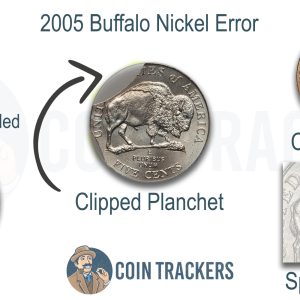
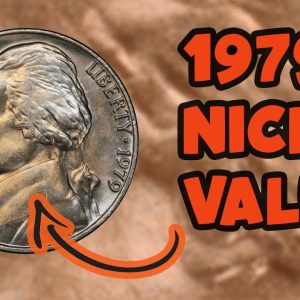
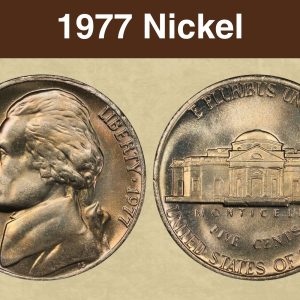
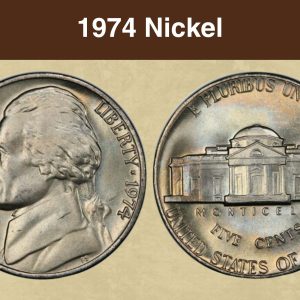
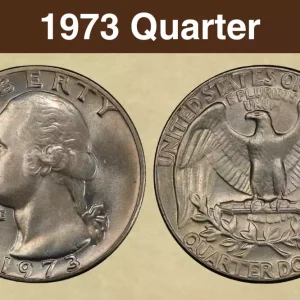
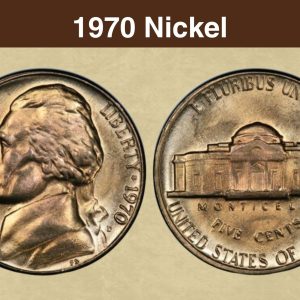
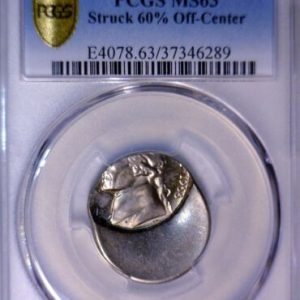
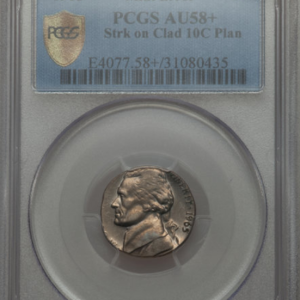
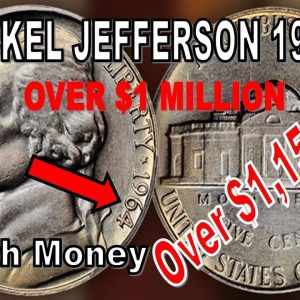
What’s a 1955 D nickel worth?
A 1955-D nickel’s value varies significantly based on its condition, ranging from around $0.20 to $260 for most uncirculated coins, but can be worth much more if it has a rare “Full Steps” designation. The 1955-D/S variety, which has a doubled mintmark, can be worth between $14 and $775 or more depending on the grade.
What nickel error to look for?
Key nickel errors to look for include doubled dies, where design elements are doubled due to die strikes, off-center strikes, where the coin is struck outside its intended position, and mint mark errors, such as doubled or missing mint marks. Other valuable errors are speared bison on 2005 nickels, the 1943 double die Jefferson nickel, and 1937-D Buffalo nickel three legs.
What makes a 1955 nickel valuable?
And during the minting. Process they’re the hardest area to strike now this coin got graded by PCGS at a minstate 64. Full steps now the highest grade you can get is a 70. And every point.
What nickel is worth $10,000 no mint mark?
In 1942 at Philadelphia. They made no mintmark nickels but they were not 35% silver they had no silver in them they were the regular copper nickel composition.